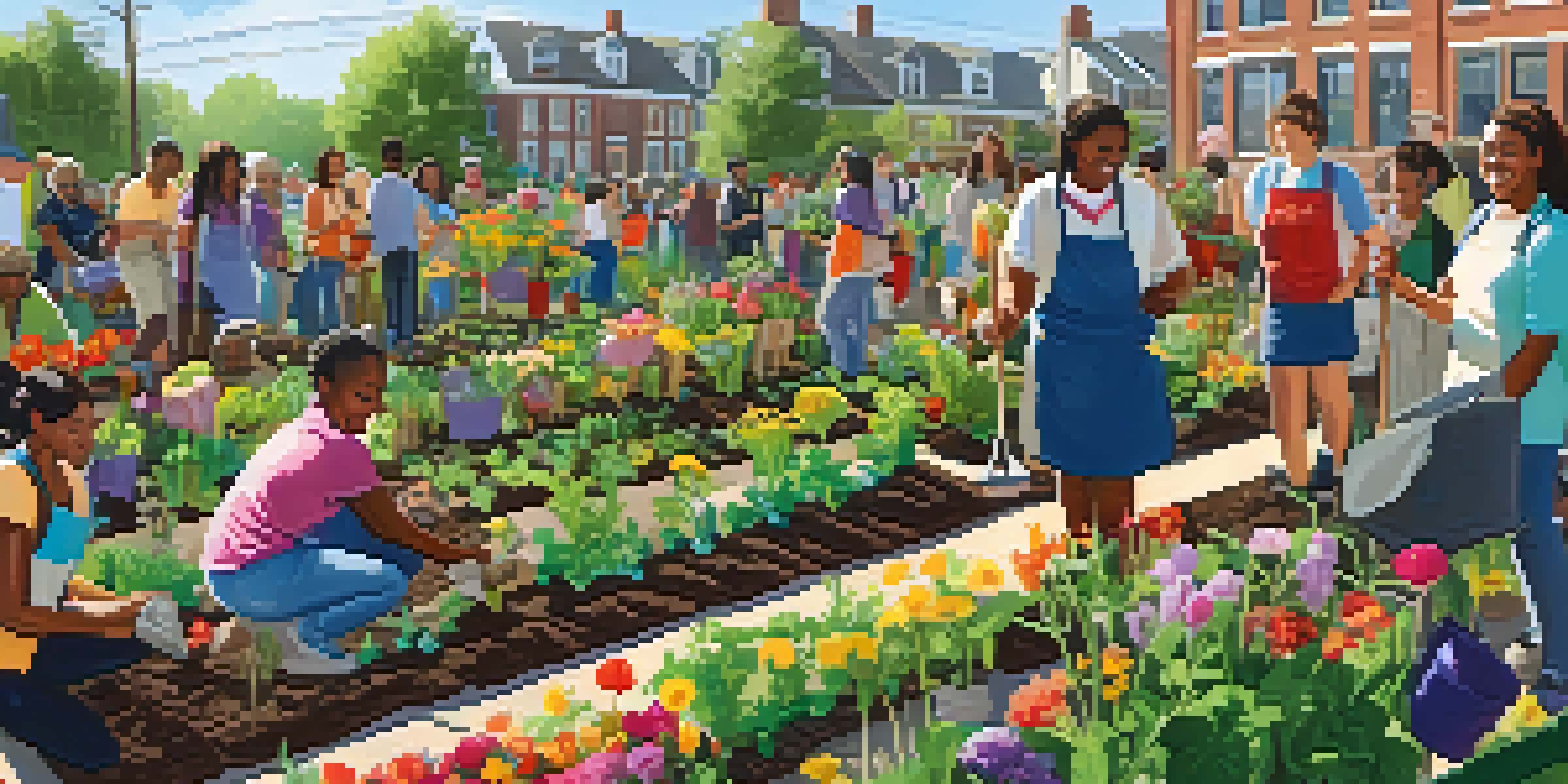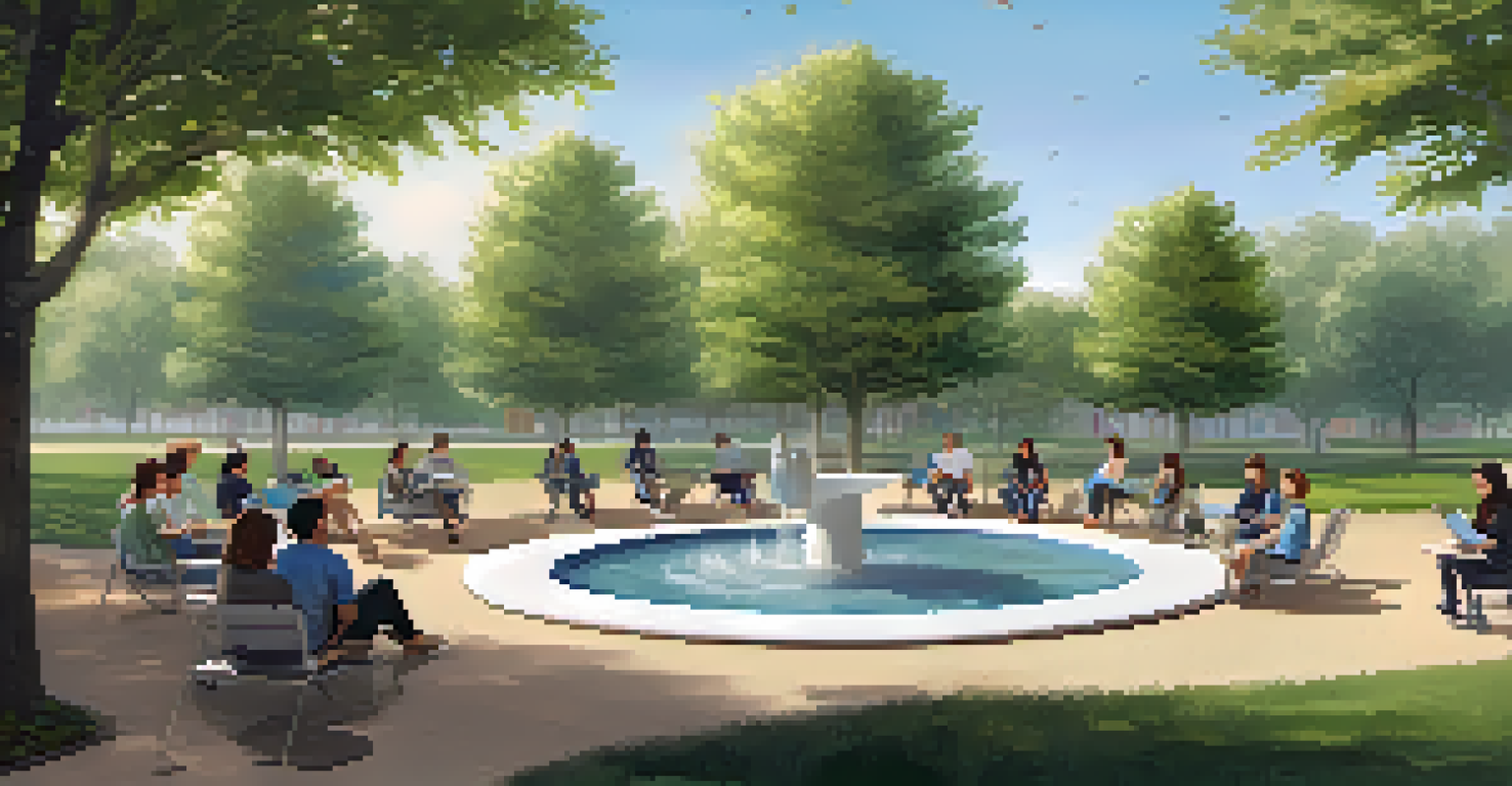Creating Outdoor Learning Spaces in Urban Environments

Understanding the Importance of Outdoor Learning
Outdoor learning spaces play a crucial role in education by providing students with a unique environment that fosters creativity and engagement. Unlike traditional classrooms, these spaces allow learners to connect with nature, which can enhance their focus and retention of information. Imagine a classroom where lessons come alive under the open sky, making learning a more dynamic experience.
The environment is where we all meet; where we all have a mutual interest; it is the one thing all of us share.
Moreover, outdoor environments can cater to diverse learning styles. Some students thrive in hands-on experiences, while others benefit from visual stimuli provided by nature. By integrating outdoor learning, educators can create a more inclusive atmosphere that accommodates various preferences, inspiring students to engage more deeply with the material.
Additionally, outdoor spaces can promote physical activity, which is vital for mental well-being. In an age where screen time is prevalent, stepping outside for lessons can invigorate students, boost their mood, and improve overall academic performance. Picture students exploring the local ecosystem while learning about biology—it's an adventure that can spark a lifelong passion for the subject.
Assessing Available Urban Spaces for Learning
Identifying suitable outdoor spaces in urban environments is the first step in creating effective learning areas. Parks, rooftops, and community gardens can serve as ideal locations for outdoor classrooms. By assessing these spaces, educators can determine their potential for enhancing learning experiences, considering factors like accessibility and safety.

It's essential to engage the community in this process. Local residents can offer insights into underutilized areas that could be transformed into educational spaces. Collaborative efforts can help identify locations that not only serve students but also enrich the community, fostering a sense of ownership and pride in the shared environment.
Safety and Accessibility Matters
Prioritizing safety and accessibility ensures inclusive outdoor learning experiences for all students.
Involving students in the assessment process can also be beneficial. Their perspectives on what makes a space inviting and conducive to learning can lead to more effective designs. By empowering students to contribute to the decision-making, educators can cultivate a sense of responsibility and enthusiasm for their outdoor learning spaces.
Designing Flexible Outdoor Learning Environments
A key element of successful outdoor learning spaces is flexibility. Designers should consider various configurations that allow for different activities, such as group discussions, hands-on experiments, or quiet reflection. This versatility ensures that the space can adapt to the curriculum and the needs of the students.
Education is not the filling of a pail, but the lighting of a fire.
Incorporating natural elements can enhance the learning experience as well. Features like trees for shade, gardens for exploration, or water features for study can inspire curiosity and creativity. Imagine students conducting science experiments near a pond, observing the local wildlife while learning about ecosystems—a perfect blend of education and nature.
Furthermore, providing movable furniture can make outdoor classrooms even more adaptable. Lightweight tables, seating, and storage can easily be rearranged to suit various activities. This approach not only encourages collaboration but also empowers students to take an active role in shaping their learning environment.
Incorporating Nature-Based Learning Activities
Nature-based learning activities can significantly enrich the educational experience. Activities like planting a garden or conducting a nature scavenger hunt encourage hands-on engagement with the environment. These experiences help students develop a deeper appreciation for nature and sustainability, fostering a sense of stewardship for the planet.
Moreover, integrating subjects like science, art, and physical education into outdoor activities can create a holistic learning experience. For instance, students can study plant biology while drawing flowers or engaging in a physical challenge that involves navigating a natural obstacle course. This multi-disciplinary approach not only reinforces learning but also keeps students excited about their education.
Benefits of Outdoor Learning Spaces
Outdoor learning environments enhance creativity, engagement, and cater to diverse learning styles.
Encouraging students to reflect on their outdoor experiences through journaling or group discussions can deepen their understanding. This reflective practice allows them to connect their experiences back to the classroom, creating a seamless learning journey that bridges the gap between theory and real-world application.
Ensuring Safety and Accessibility in Outdoor Spaces
Safety is paramount when creating outdoor learning spaces, especially in urban environments. Educators must assess potential hazards and implement measures to mitigate risks. This might include installing safe walking paths, ensuring proper fencing, or providing supervision during activities to create a secure learning environment.
Accessibility is equally important. Outdoor learning spaces should be designed to accommodate all students, including those with disabilities. This could involve ensuring wheelchair access, providing tactile experiences for visually impaired students, or creating quiet zones for those who may feel overwhelmed in larger groups.
By prioritizing safety and accessibility, educators can foster an inclusive environment where every student feels welcome. When students know that their well-being is considered, they are more likely to engage fully in outdoor learning experiences, reaping the benefits of education in nature.
Integrating Technology in Outdoor Learning Spaces
Incorporating technology into outdoor learning can enhance educational experiences while maintaining a connection to nature. For instance, using tablets or smartphones for research during outdoor lessons allows students to explore their surroundings in real-time. Imagine students using augmented reality apps to identify plants or animals, merging technology with the natural world.
Moreover, technology can facilitate collaboration among students, even when they are outside. Online platforms can enable real-time sharing of observations, data collection, and project collaboration, making outdoor learning more interactive. This blend of tech and nature can cater to digital natives, ensuring they remain engaged and motivated.
Community Involvement is Key
Engaging the community enriches outdoor learning initiatives and fosters a sense of ownership over shared spaces.
However, it’s essential to strike a balance. While technology can enhance learning, it shouldn’t overshadow the benefits of direct interaction with the environment. Encouraging students to unplug and truly immerse themselves in nature is vital for fostering a genuine appreciation for the world around them.
Engaging the Community in Outdoor Learning Initiatives
Building a strong connection with the community can significantly enhance outdoor learning initiatives. Local organizations, businesses, and residents can provide support in various ways, from volunteering to share expertise to donating materials for outdoor projects. This collaboration can create a robust network that enriches the learning experience.
Hosting community events in outdoor learning spaces can also foster engagement. Workshops, nature walks, or educational fairs can bring residents together, showcasing the benefits of these environments. Such events not only strengthen the community bond but also highlight the value of outdoor learning for students and families alike.

Furthermore, creating opportunities for students to share their outdoor learning experiences with the community can inspire a broader appreciation for education in nature. Presentations, art shows, or community gardens can showcase students’ work and promote a culture of learning that extends beyond the classroom.